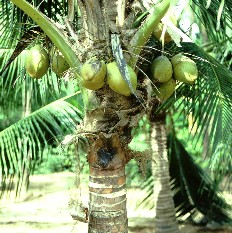From: Science Daily - 02/06/2009
There is growing interest in using crop residues as the feedstock of choice for the production of cellulosic-based ethanol because of the more favorable energy output relative to grain-based ethanol. This would also help provide a solution to the debate of food versus fuel, because less of the grain would be diverted to ethanol production, leaving more available for food and feed consumption.
Crop residues are viewed as a low cost and readily available source of material since more than 50% of crop production is residues. However, crop residues should not be considered simply a waste or benign material. They possess a critical role in sustaining soil organic matter. Consequently, extensive removal of crop residues for ethanol productionor for other industrial purposesmay impact the long-term productivity of soils.
Agriculture and Agri-Food Canada scientists at the Indian Head Research Farm in Indian Head and the Semiarid Prairie Agricultural Research Centre in Swift Current, all located in Saskatchewan (SK), measured the impact of straw removal after 50 years on soil organic carbon (SOC) and soil organic nitrogen (SON) using the Indian Head Long-Term Rotations established in 1958. These rotations included a series of fallow–spring wheat–spring wheat crop sequences where straw was removed through baling on selected plots. In this study, straw removal with baling occurred 2 years out of 3, or 66% of the time. The study was converted to no-till in 1991.
Another 4-year study was conducted to quantify how much wheat straw is actually removed through baling when different harvesting systems are used. The three harvesting/straw removal systems involved (1) swathing-harvesting-baling, (2) straight harvesting-baling, and (3) harvesting with a stripper header-swathing-baling. Both of these studies were funded by Agriculture and Agri-Food Canada, the Panel on Energy Reduction and Development, and the Indian Head Agricultural Research Foundation.
Results from these studies were published in the Agronomy Journal by G.P. Lafond and others. The results were also presented at the annual meetings of the Indian Head Agricultural Research Foundation held in Moose Jaw, SK, on 27 Jan. 2009 and the Saskatchewan Soils and Crops Workshop on 26 Feb. 2009 in Saskatoon, SK.
Guy Lafond, who was the study leader, says, “The results would support the recommendation that some straw could be removed from fields providing that the frequency of removal was less than 66% and that no more than 40% of the aboveground residues other than grain are removed. From a crop management perspective, proper nitrogen fertility combined with no-till would further reduce the possibility of net losses in SOC and SON.”
Research is ongoing at Agriculture and Agri-Food Canada to examine different types of crops for not only their grain and end-use quality but also for their crop residue production and quality. Some crops are being developed as platforms for biomass production.
Crop residues are viewed as a low cost and readily available source of material since more than 50% of crop production is residues. However, crop residues should not be considered simply a waste or benign material. They possess a critical role in sustaining soil organic matter. Consequently, extensive removal of crop residues for ethanol productionor for other industrial purposesmay impact the long-term productivity of soils.
Agriculture and Agri-Food Canada scientists at the Indian Head Research Farm in Indian Head and the Semiarid Prairie Agricultural Research Centre in Swift Current, all located in Saskatchewan (SK), measured the impact of straw removal after 50 years on soil organic carbon (SOC) and soil organic nitrogen (SON) using the Indian Head Long-Term Rotations established in 1958. These rotations included a series of fallow–spring wheat–spring wheat crop sequences where straw was removed through baling on selected plots. In this study, straw removal with baling occurred 2 years out of 3, or 66% of the time. The study was converted to no-till in 1991.
Another 4-year study was conducted to quantify how much wheat straw is actually removed through baling when different harvesting systems are used. The three harvesting/straw removal systems involved (1) swathing-harvesting-baling, (2) straight harvesting-baling, and (3) harvesting with a stripper header-swathing-baling. Both of these studies were funded by Agriculture and Agri-Food Canada, the Panel on Energy Reduction and Development, and the Indian Head Agricultural Research Foundation.
Results from these studies were published in the Agronomy Journal by G.P. Lafond and others. The results were also presented at the annual meetings of the Indian Head Agricultural Research Foundation held in Moose Jaw, SK, on 27 Jan. 2009 and the Saskatchewan Soils and Crops Workshop on 26 Feb. 2009 in Saskatoon, SK.
Guy Lafond, who was the study leader, says, “The results would support the recommendation that some straw could be removed from fields providing that the frequency of removal was less than 66% and that no more than 40% of the aboveground residues other than grain are removed. From a crop management perspective, proper nitrogen fertility combined with no-till would further reduce the possibility of net losses in SOC and SON.”
Research is ongoing at Agriculture and Agri-Food Canada to examine different types of crops for not only their grain and end-use quality but also for their crop residue production and quality. Some crops are being developed as platforms for biomass production.
----------------------------------------
Check for earlier Pacific Biofuel posts: http://pacbiofuel.blogspot.com/

No comments:
Post a Comment